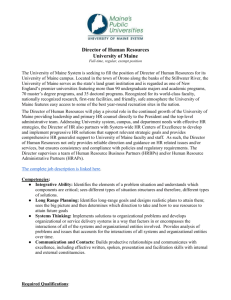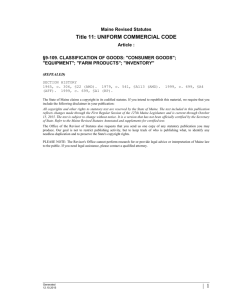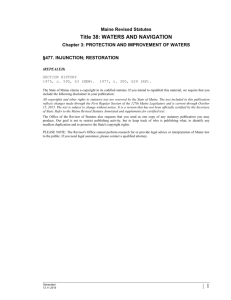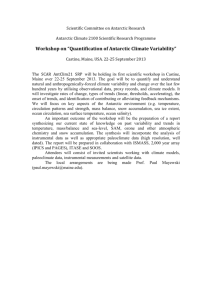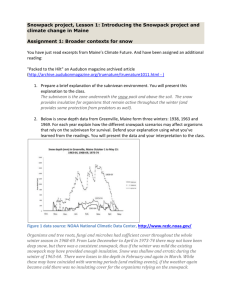Snowpack project Lesson 3 Assignment 1: Climate Summit worksheet
advertisement
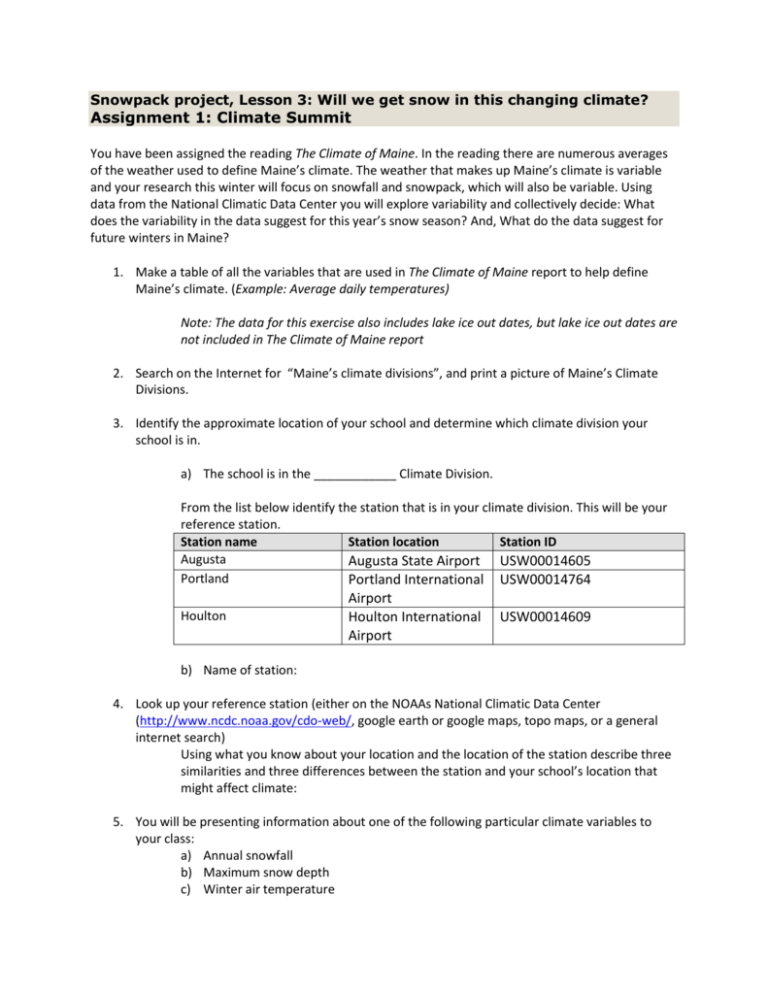
Snowpack project, Lesson 3: Will we get snow in this changing climate?
Assignment 1: Climate Summit
You have been assigned the reading The Climate of Maine. In the reading there are numerous averages
of the weather used to define Maine’s climate. The weather that makes up Maine’s climate is variable
and your research this winter will focus on snowfall and snowpack, which will also be variable. Using
data from the National Climatic Data Center you will explore variability and collectively decide: What
does the variability in the data suggest for this year’s snow season? And, What do the data suggest for
future winters in Maine?
1. Make a table of all the variables that are used in The Climate of Maine report to help define
Maine’s climate. (Example: Average daily temperatures)
Note: The data for this exercise also includes lake ice out dates, but lake ice out dates are
not included in The Climate of Maine report
2. Search on the Internet for “Maine’s climate divisions”, and print a picture of Maine’s Climate
Divisions.
3. Identify the approximate location of your school and determine which climate division your
school is in.
a) The school is in the ____________ Climate Division.
From the list below identify the station that is in your climate division. This will be your
reference station.
Station name
Station location
Station ID
Augusta
Augusta State Airport USW00014605
Portland
Portland International USW00014764
Houlton
Airport
Houlton International
Airport
USW00014609
b) Name of station:
4. Look up your reference station (either on the NOAAs National Climatic Data Center
(http://www.ncdc.noaa.gov/cdo-web/, google earth or google maps, topo maps, or a general
internet search)
Using what you know about your location and the location of the station describe three
similarities and three differences between the station and your school’s location that
might affect climate:
5. You will be presenting information about one of the following particular climate variables to
your class:
a) Annual snowfall
b) Maximum snow depth
c) Winter air temperature
d)
e)
f)
g)
Annual air temperature
Number of days below freezing
Days with snowpack
Lake ice-out date
6. From your teacher or (http://participatoryscience.org/file/climate-data-maines-3-climatedivisions) get the graphical data for the climate variable that you are investigating.
7. Answer the following questions and prepare to present your data and your answers to the class.
a) As a group describe the graph ('What we have here is...')... just talk about the graph
itself ("On the X-axis we have... on the Y axis we have, this symbol represents ___,
and this symbol represents ___...")
b) Describe what the graph shows (just the facts), not overall, but in terms of trends
through time (for example: ‘from 1970 to 1974 there was less variability in the data
than at any other time’, ‘the trend appears to be toward more frequent events’
c) Describe what the graph tells you (interpreting the facts) with regard to the
following questions:
i.
ii.
iii.
iv.
How do the long-term data for this climate variable compare to the 30-year
climate average in the Climate of Maine report?
How does variability appear to be changing through time?
What does the variability in the data suggest for this year’s snow season at
your school?
What do the data suggest for future winters at your school?
8. Prepare a presentation of your data and your data analysis for sharing with the class. Your
presentation must include the points in #7 (above).

